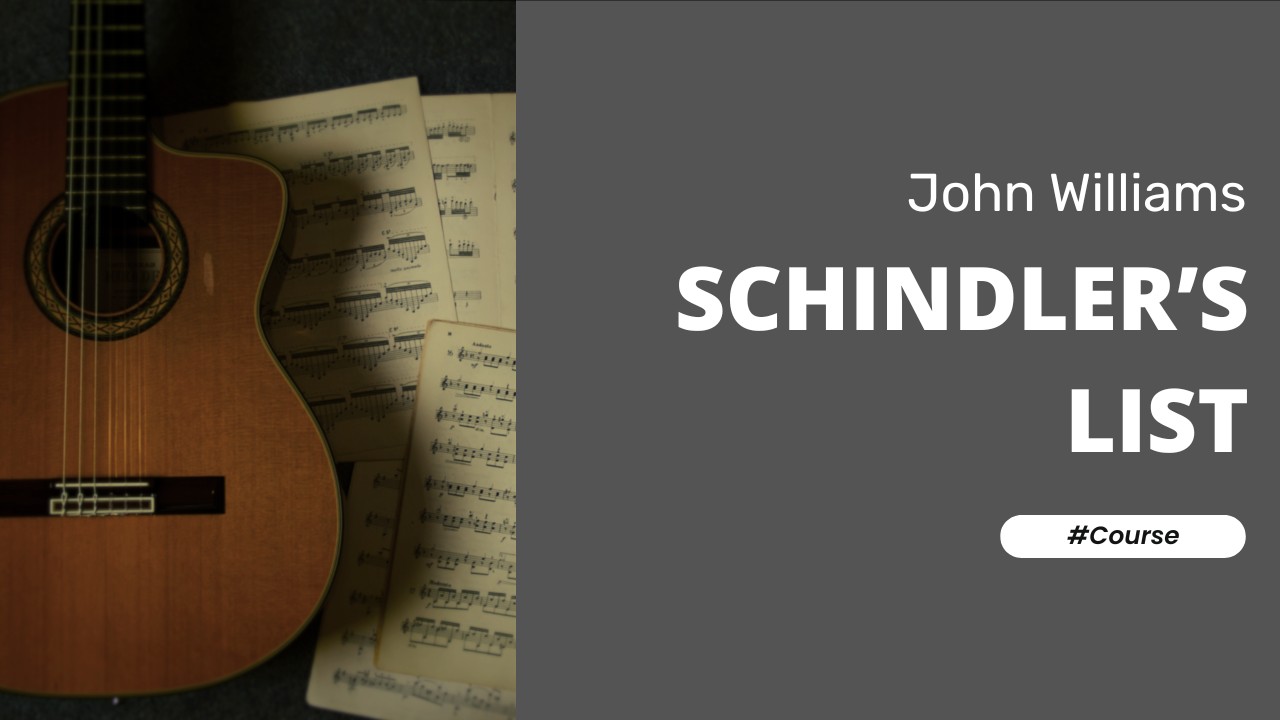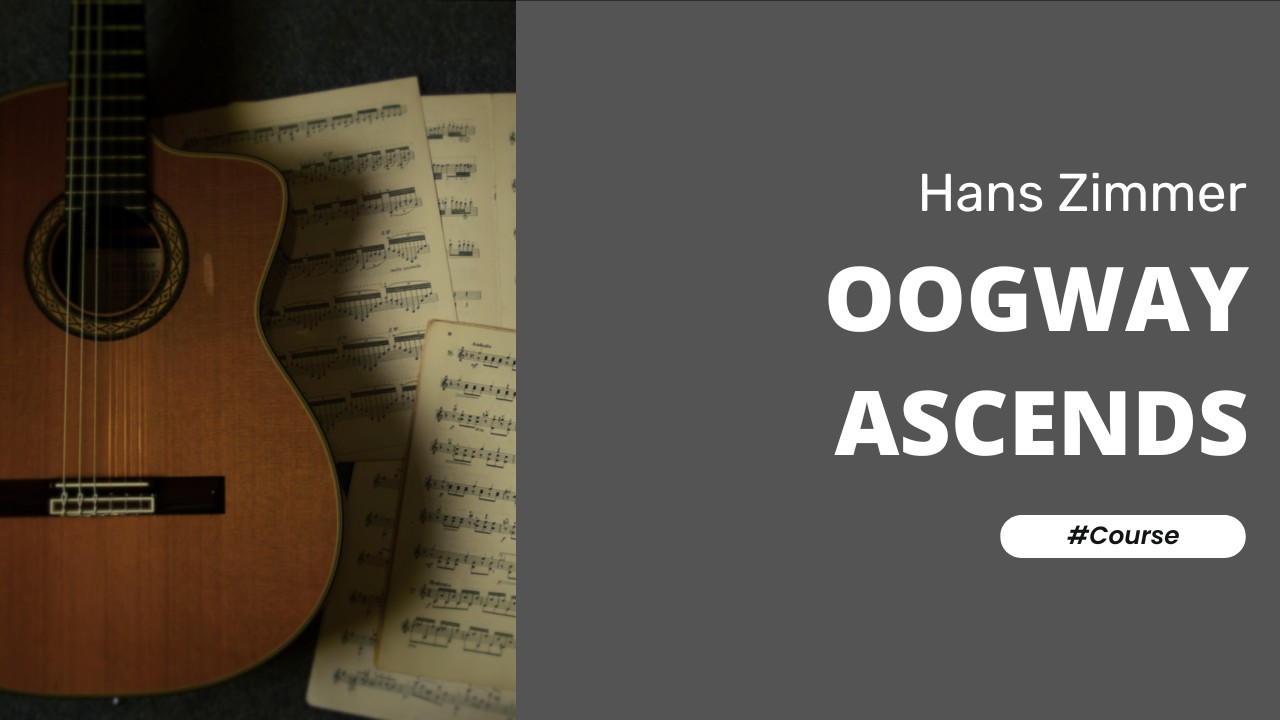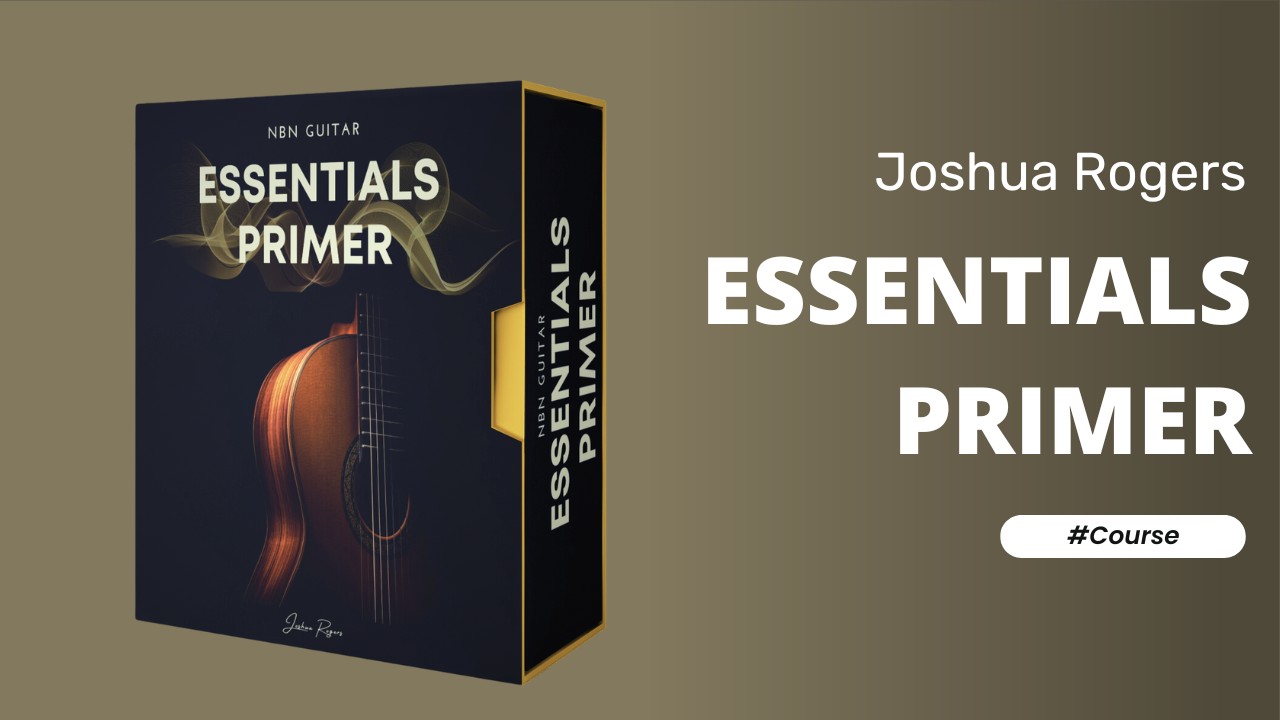Nocturne in E Flat Major by Frederic Chopin
Introduction to Nocturne in Eb Major Guitar Course
Frédéric Chopin is surely one of the world’s most famous piano composers. He was born in Zelazowa Wolo in Poland on the 1st of March 1810. He was undoubtedly one of the finest and well-known musicians of his era but sadly he only lived to be 39 years of age – passing away in Paris on the 17th of October 1849. During his time in Paris he befriended Franz Lizst and the two performed together no less than 7 times. Although Chopin dedicated his Opus. 10 Etudes to Liszt it is said that the two fell out of friendship after Chopin reprimanded Lizst for adding too many embellishments to one of his Nocturnes during a performance.
It is said that Chopin composed this piece whilst in his twenties after he had arrived in Paris. The piece is composed in Rounded Binary Form with each repetition featuring increased use of ornamentation. This particular practice has continued to the present day where musicians will play each new verse or chorus in a slightly different way whilst still retaining the overall melodic shape. The piece is written in 12/8 time and is also has the indication sensa tempo (without tempo) indicating the the performer has considerable freedom within the piece. It is obvious that Chopin’s intention was to emphasise feeling and emotion rather than observing a strict tempo.
Below are a few interesting notes about the piece specifically for guitarists:
-
Even though this famous Nocturne was composed in E flat major it is far easier for guitarists to play it in E major. However, the guitar can be tuned down by a semitone/half step allowing you to play in in the original key.
-
The classical guitar arrangement here is actually quite difficult in places as is usually the case when a piano transcription of this complexity is transcribed for guitar.
-
One of the most difficult aspects is timing. Chopin was truly respected for his ability to maintain complicated & contrasting rhythmic passages in both hands and that ability is always a challenge for guitarists because we need to maintain all of that with just six strings.
-
The piece is full of romantic ornamentation featuring 3-note trills, upper & lower mordents, turns and inverted turns and more.
The assiduous guitarist should study the classical guitar sheet music with tabs and then practice those passages rigorously to ensure that they are both musical and in time!
Musical Style
Frédéric Chopin’s musical style is characterized by its poetic expressiveness, intricate ornamentation, and harmonic innovation. Known as the poet of the piano, Chopin’s compositions often feature flowing melodies, rich harmonies, and a nuanced use of rubato. His works are deeply emotional, often reflecting his personal experiences and the cultural influences of his Polish heritage. Chopin’s ability to blend technical virtuosity with lyrical beauty has made his music timeless and universally beloved. His contributions to piano literature, including his nocturnes, mazurkas, and ballades, have left an indelible mark on the Romantic era and continue to inspire musicians today.
Notable Pieces
Five notable pieces by Frédéric Chopin:
• Ballade No. 1 in G minor, Op. 23
• Étude in E major, Op. 10, No. 3 (“Tristesse”)
• Fantaisie-Impromptu in C-sharp minor, Op. posth. 66
• Polonaise in A-flat major, Op. 53 (“Heroic”)
• Prelude in D-flat major, Op. 28, No. 15 (“Raindrop”)
Let your fingers fly!
Josh
Course Instructor
Nocturne in E Flat Major Course
About this Course
Introduction to Nocturne in Eb Major Guitar Course
Frédéric Chopin is surely one of the world’s most famous piano composers. He was born in Zelazowa Wolo in Poland on the 1st of March 1810. He was undoubtedly one of the finest and well-known musicians of his era but sadly he only lived to be 39 years of age – passing away in Paris on the 17th of October 1849. During his time in Paris he befriended Franz Lizst and the two performed together no less than 7 times. Although Chopin dedicated his Opus. 10 Etudes to Liszt it is said that the two fell out of friendship after Chopin reprimanded Lizst for adding too many embellishments to one of his Nocturnes during a performance.
It is said that Chopin composed this piece whilst in his twenties after he had arrived in Paris. The piece is composed in Rounded Binary Form with each repetition featuring increased use of ornamentation. This particular practice has continued to the present day where musicians will play each new verse or chorus in a slightly different way whilst still retaining the overall melodic shape. The piece is written in 12/8 time and is also has the indication sensa tempo (without tempo) indicating the the performer has considerable freedom within the piece. It is obvious that Chopin’s intention was to emphasise feeling and emotion rather than observing a strict tempo.
Below are a few interesting notes about the piece specifically for guitarists:
-
Even though this famous Nocturne was composed in E flat major it is far easier for guitarists to play it in E major. However, the guitar can be tuned down by a semitone/half step allowing you to play in in the original key.
-
The classical guitar arrangement here is actually quite difficult in places as is usually the case when a piano transcription of this complexity is transcribed for guitar.
-
One of the most difficult aspects is timing. Chopin was truly respected for his ability to maintain complicated & contrasting rhythmic passages in both hands and that ability is always a challenge for guitarists because we need to maintain all of that with just six strings.
-
The piece is full of romantic ornamentation featuring 3-note trills, upper & lower mordents, turns and inverted turns and more.
The assiduous guitarist should study the classical guitar sheet music with tabs and then practice those passages rigorously to ensure that they are both musical and in time!
Musical Style
Frédéric Chopin’s musical style is characterized by its poetic expressiveness, intricate ornamentation, and harmonic innovation. Known as the poet of the piano, Chopin’s compositions often feature flowing melodies, rich harmonies, and a nuanced use of rubato. His works are deeply emotional, often reflecting his personal experiences and the cultural influences of his Polish heritage. Chopin’s ability to blend technical virtuosity with lyrical beauty has made his music timeless and universally beloved. His contributions to piano literature, including his nocturnes, mazurkas, and ballades, have left an indelible mark on the Romantic era and continue to inspire musicians today.
Notable Pieces
Five notable pieces by Frédéric Chopin:
• Ballade No. 1 in G minor, Op. 23
• Étude in E major, Op. 10, No. 3 (“Tristesse”)
• Fantaisie-Impromptu in C-sharp minor, Op. posth. 66
• Polonaise in A-flat major, Op. 53 (“Heroic”)
• Prelude in D-flat major, Op. 28, No. 15 (“Raindrop”)
Let your fingers fly!
Josh
Course Instructor
Nocturne in E Flat Major Course




